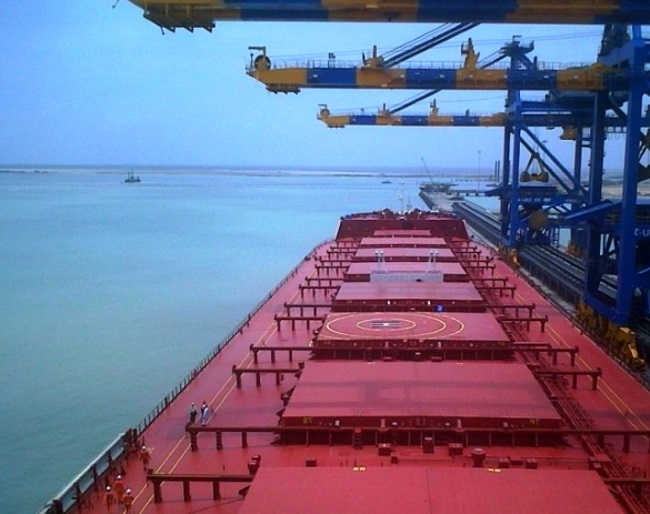Estimates suggest more than 600,000 teu has now been affected from the fallout of an outbreak of Covid-19 around Yantian Port in southern China with ports around the world braced for a severe shortage of equipment in the coming weeks, just as the US peak season gets underway.
Quizzed by Splash today as to the total number of boxes hit by the three-week Yantian crisis, Lars Jensen, one of the world’s most respected container shipping analysts, said: “A reasonable estimate right now is that at least 600,000 teu have been impacted – also indicating a backlog of some 300,000 teu of export cargo waiting to get moved out of the region with the remainder being a mix of import cargo and import empty equipment.”
Putting the 600,000 number in context, the Yantian partial shutdown is close to affecting twice as many containers as were hit when the Suez Canal was closed for six days in March during the high profile Ever Given accident.
“The current estimated wait is over a fortnight, causing many carriers to divert vessels to other ports. In total, over 300 sailings from all liners will omit Yantian,” Maersk, the world’s largest containerline, stated in an update today.
Boxes arriving from China to the US today are taking 42% longer than last June
Fortunately, on site there are clear signs that the port’s productivity is improving, albeit it will take many weeks to get through the backlog of boxes with most lines omitting Yantian from many of their schedules for the remainder of June.
An advisory from South Korean liner HMM yesterday stated that Yantian’s productivity is running at 70%.
A customer advisory from Yantian International Container Terminals yesterday stated: ““Current overall operational capacity has returned to 70% of normal levels, and container yard utilisation has dropped from 100% to 70%.”
Looking at these latest numbers Jon Monroe, who runs his own eponymous liner consulting company, pointed out via LinkedIn that based in Yantian’s daily normal throughput of 38,000 teu, if it is operating at 70%, that means 11,400 teu are still being backed up daily.
HMM mentioned waiting times for Yantian gate-in are in excess of seven hours while a Maersk advisory from Tuesday stated that vessel reliability will continue to suffer with an average waiting time of 16 days and counting.
As for the spill-over effects on the neighbouring ports of Shekou and Nansha, HMM stated yesterday that barge connections between Nansha and Yantian are presently difficult to arrange and subject to heavy delays.
The latest setback to liner schedules in southern China is having a noticeable impact on freight rates.
Online international freight marketplace Freightos today noted Asia-US rates to both coasts are now at least triple their level last June.
Asia-US West Coast prices now stand at $6,614 per feu, up 206% year-on-year. Asia-US East Coast prices are now at $9,889 per feu, 244% higher than rates for this week last year.
“The disruption is expected to worsen empty container shortages at skipped ports, and the delays will also mean more cancelled sailings and effectively less capacity in June and July even as demand continues to surge,” Freightos noted today.
The impact of the outbreak at Yantian will be amplified because the industry as a whole is already operating at a deficit – just as it was when the Suez was blocked – with no extra capacity to throw at new problems. For example, Freightos marketplace data show ocean shipments now arriving from China to the United States took 42% longer than last June and this will probably get worse before it gets better.
Echoing this theme from earlier in the month, Alan Murphy, CEO and founder of Danish container shipping consultancy Sea-Intelligence, wrote in an article for Splash that liner shipping’s run of accidents over the past few months had been near impossible to absorb given the uniquely stretched status of carrier equipment around the world.
“High freight rates are driven by equipment and space shortages, which in turn are driven by a confluence of unprecedented US demand (due to pandemic shifts from services to goods) and supply-side disruptions,” Murphy wrote, going on to list port congestion, Covid infections and quarantines in ports such as Yantian, vessels being grounded due to quarantines, and the challenges of vessels getting stuck in canals, dropping boxes, or catching on fire.
“In the past 10 years, vessel incidents would be terrible for those immediately impacted, but they would not have any systemic impact, as the unaffected boxes and boxes waiting to be loaded would just go on the next half-empty ship, but all of the ships are full now,” Murphy pointed out.


















